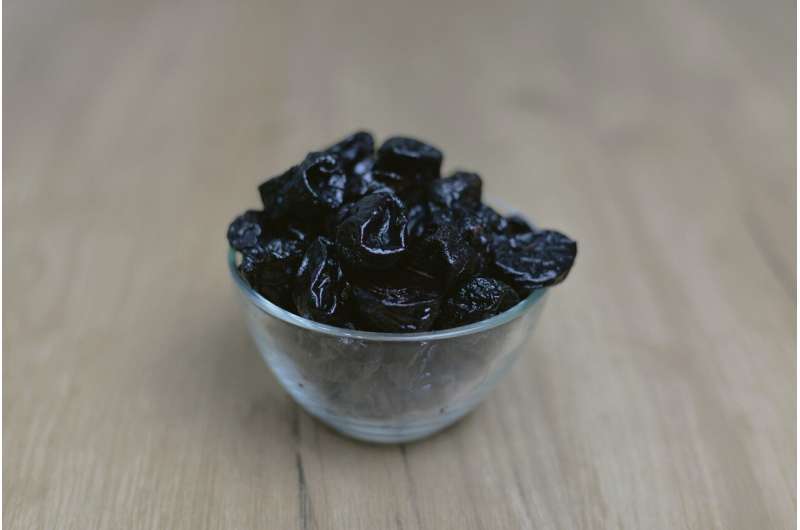On Nutrition: Don't be embarrassed to put prunes into your grocery cart

Why is it that, real or not, we tend to reject things that associate us with being old? Case in point: A little over two decades ago, the U.S. Food and Drug Administration approved a petition to allow prune producers to market their product as "dried plums." They hoped the new designation might help remove any stigma for those who think prunes are only for grandparents.
Wait, I am a grandparent. And hooray, the California Prune Board says that, although prunes were referred to as dried plums in the past, they are now "embracing and proclaiming the wonders of California prunes with pride."
Whether you call them prunes or dried plums, think of them first as an amazing functional food. That means prunes have other positive effects even beyond their impressive nutritional value.
What is it in prunes and prune juice, for example, that helps prevent constipation? Scientists say the attribute comes from the presence of dietary fiber as well as sorbitol, a sugar alcohol that acts as a mild laxative. At any rate, as little as 1/2 cup of prune juice or four to five prunes a day can keep the old (and young) gut working well.
What really screams out "functional" to me, however, is a growing body of evidence that shows how eating prunes can protect our bones. Two clinical trials from the University of Pennsylvania, for example, found less bone loss and improved bone density in older women who ate five to 10 prunes a day for six months to a year.
Researchers think one possible reason for this positive effect is related to the specific nutrients and other substances in prunes that fortify bones and reduce inflammation at the same time.
If you have diabetes, you may deduce from prune juice's nutrition label that it's got way too much sugar for comfort. Here's the good news, though. Prune juice boasts three ingredients that work together to prevent spikes in blood sugar: dietary fiber, sorbitol (which is half as sweet at regular sugar) and fructose, natural fruit sugar that has a much lower effect on blood glucose than many other types of carbohydrates. Just remember to stick to a half-cup serving size unless your health professional advises you otherwise.
Once you open a bag of prunes, reseal it and store in a cool, dry place. You can also refrigerate prunes in an airtight container, says the California Prune Board.
So whether it's prunes or dried plums you consider most socially acceptable, don't be embarrassed to put them into your grocery cart. They make a great high-powered snack or try some really cool recipes at californiaprunes.org/recipes.
Heck, you might even get your grandkids to like them.
©2022 MediaNews Group, Inc.
Distributed by Tribune Content Agency, LLC.





















